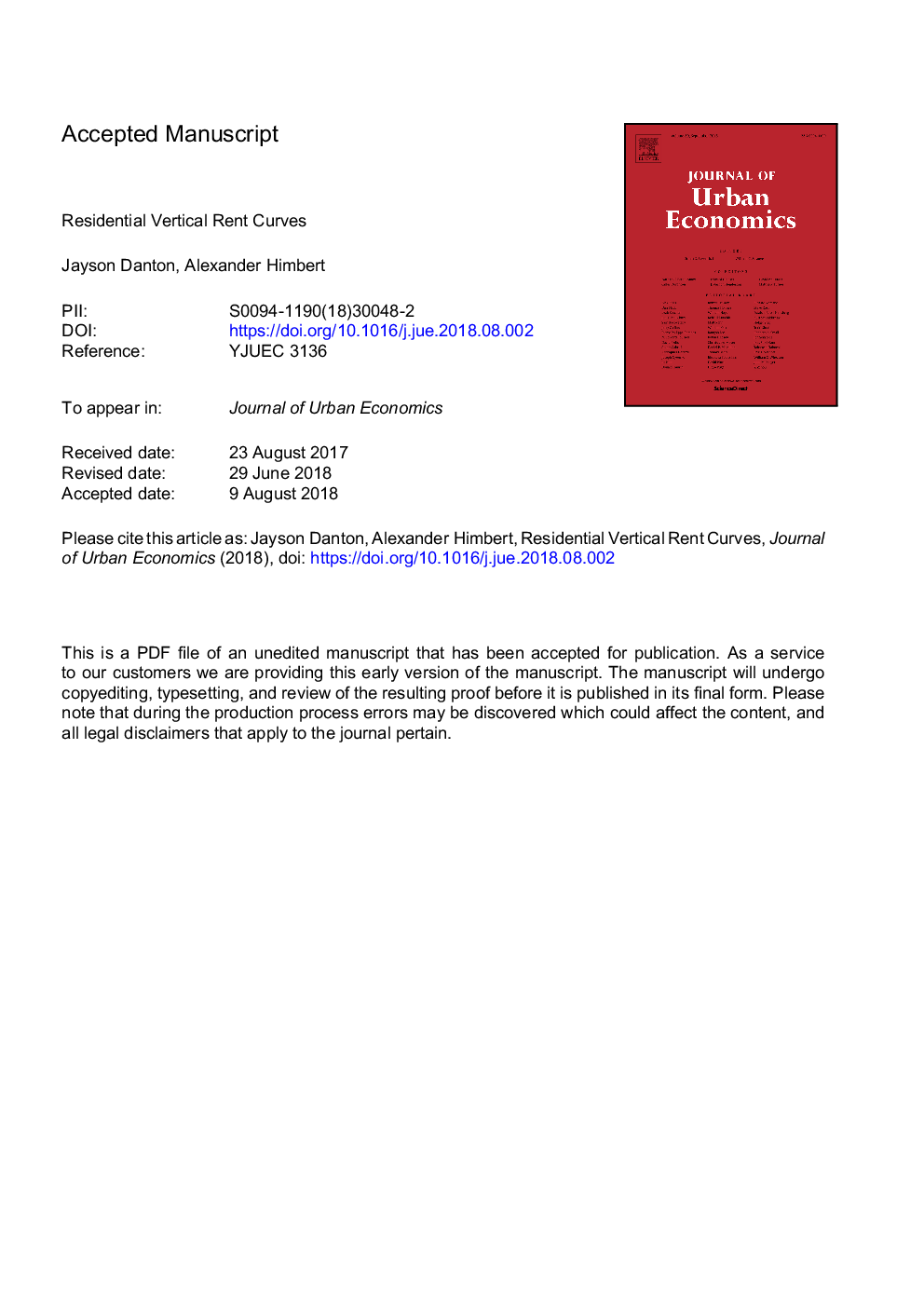| Article ID | Journal | Published Year | Pages | File Type |
|---|---|---|---|---|
| 10127770 | Journal of Urban Economics | 2018 | 27 Pages |
Abstract
We estimate the equilibrium bid-rent function for vertical locations within residential buildings using geocoded rental price data. We find that the vertical rent curve is non-monotonic with respect to floor level. Specifically, residential bidders pay a 1.5 to 3.5% ground floor premium. For the remaining vertical locations, the slope of the vertical rent curve is positive with respect to floor level. Our analysis shows that the ground floor premium is indeed a valuation of access similar to the valuation of access to the Central Business District (CBD) in a monocentric setting. Based on the cities in our sample, the ground floor premium is roughly equivalent to moving between 250-450â¯m closer to the CBD. The positive slope of the vertical rent curve, with respect to floor level, is predominately explained by amenities (e.g. views) that compensate residents for the lack of easy access to the street. Furthermore, our analysis provides evidence of an equilibrium relationship between rental prices and proximity to initially high-priced areas that is consistent with rental price spillovers. More precisely, dwellings at higher vertical locations exhibit stronger rental price growth if they are located closer to an initially expensive neighborhood compared to dwellings on lower floor levels.
Related Topics
Social Sciences and Humanities
Economics, Econometrics and Finance
Economics and Econometrics
Authors
Jayson Danton, Alexander Himbert,
